Root Canal Retreatment
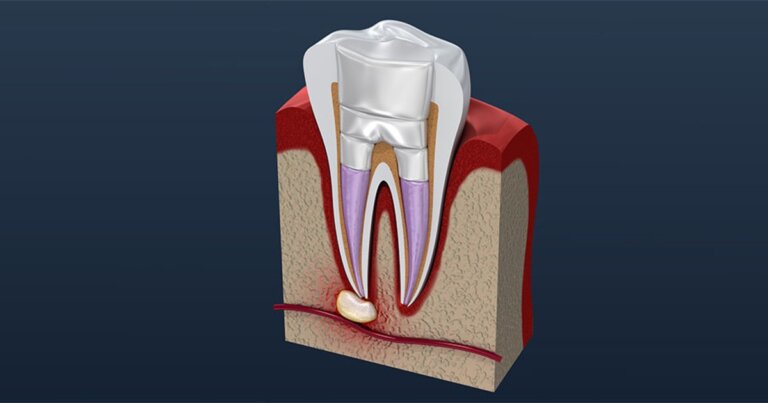
What Is Root Canal Retreatment?
Root canal therapy is a dental procedure designed to treat infections or damage within the innermost part of a tooth, known as the pulp. During a traditional root canal, the infected pulp is removed, and the hollowed-out space is thoroughly cleaned, disinfected, and then sealed. This procedure aims to alleviate tooth pain and save a tooth that might otherwise need to be extracted.
However, there are cases where a tooth that has undergone a previous root canal treatment may not completely heal or could develop new issues over time. This is where Root Canal Retreatment comes into play. Root canal retreatment involves reopening the previously treated tooth, removing any compromised or infected material, and then re-cleaning, disinfecting, and sealing the tooth’s interior. This process gives the tooth a second chance at healing and can help save it from extraction.
Before deciding on whether Root Canal Retreatment are right for you, there are some things you should know:
- Who Needs Root Canal Retreatment?
- What Are The Advantages Of Root Canal Retreatment?
- What Are The Potential Risks Or Complications Of Root Canal Retreatment?
- What Are The Alternative Treatments If I Do Not Choose Root Canal Retreatment?
- How Much Does Root Canal Retreatment Cost?
- What Are The Steps In The Root Canal Retreatment Procedure?
- Can I Have Root Canal Retreatment If I Am Pregnant?
- How Long Does Root Canal Retreatment Last?
If you have any further questions about Root Canal Retreatment or other dental services offered at Atlas Dental, please contact us.

Free phone consultation
Have questions about root canal retreatment? Schedule a free phone consultation with our Toronto dentist.

5 star google reviews
See for yourself why more and more people are choosing our dental office for root canal retreatment.

Emergency dental care
Have a toothache in Toronto and think you need root canal treatment? Book online for same day exam and treatment.
Who Needs Root Canal Retreatment?
Root canal treatment is generally successful in resolving dental issues and alleviating pain caused by infections or damage to the pulp of a tooth. However, there are instances where the initial treatment may not fully address the problem, or new issues may arise in a tooth that has previously undergone a root canal. This is when root canal retreatment becomes necessary.
There are several scenarios in which a person might require root canal retreatment:
- Persistent Symptoms: If you have previously had a root canal but continue to experience a toothache, sensitivity to hot or cold temperatures, or gum swelling around the treated tooth, it could indicate that the initial treatment was not completely successful. These persistent symptoms might be a sign of remaining infected tissue or a new infection.
- Delayed Healing: In some cases, the healing process after a root canal might be delayed or incomplete. This could be due to factors such as the presence of complex tooth anatomy that wasn’t fully addressed during the initial treatment or the development of new issues within the tooth.
- New Dental Problems: Teeth that have undergone a root canal are not immune to new dental problems. Just like any other teeth, they can still develop cavities, fractures, or other issues that might require retreatment.
- Recurrent Infections: Although root canal treatment aims to eliminate infection, there are instances where bacteria may persist or reinfect the tooth, causing the need for retreatment.
If you are experiencing any of these symptoms or suspect that your previously treated tooth might be facing complications, it’s important to consult your dentist. They will evaluate your oral health, conduct necessary examinations, and determine whether root canal retreatment is the appropriate course of action to ensure the continued health and function of your tooth. If you have further questions about Root Canal Retreatment, please contact us.
What Are The Advantages Of Root Canal Retreatment?
Root canal retreatment might sound like a complex procedure, but it comes with several advantages that can help preserve your oral health and save your tooth from potential extraction. Let’s explore some of these key benefits:
- Preservation of Natural Teeth: One of the primary advantages of root canal retreatment is that it allows you to keep your natural tooth. Preserving your natural teeth is essential for maintaining proper chewing function and preventing the need for more extensive dental work, such as tooth extraction and replacement with artificial teeth.
- Cost-Effectiveness: Root canal retreatment is generally more cost-effective than extracting a tooth and replacing it with a dental implant or dental bridge. While the initial root canal treatment and retreatment procedures do have associated costs, they are often more affordable in the long run compared to the expenses of tooth replacement options.
- Maintaining Jawbone Health: When a tooth is extracted, the jawbone in the area can start to deteriorate over time due to lack of stimulation. Retaining your natural tooth through retreatment helps maintain the integrity of the jawbone structure and prevents potential bone loss.
- Natural Appearance and Function: Retaining your natural tooth also ensures that your smile and bite remain unchanged. Artificial teeth or dental implants may not match the appearance and function of your natural teeth as effectively as a properly treated and restored natural tooth.
- Faster Recovery: Root canal retreatment often involves less recovery time compared to tooth extraction and implant placement. You’ll likely experience minimal discomfort and be able to resume your normal activities relatively quickly.
- Preserving Adjacent Teeth: Choosing root canal retreatment over tooth extraction can help prevent the need to modify or remove adjacent healthy teeth, which may be necessary when placing dental implants or bridges.
- Less Invasive: Root canal retreatment is a minimally invasive procedure that focuses on addressing issues within the tooth itself. This means there’s no need for surgical procedures that might be required for tooth extraction and implant placement.
- Improved Quality of Life: By saving your natural tooth and addressing any discomfort or tooth pain, root canal retreatment can significantly improve your overall quality of life. You can continue to enjoy your favorite foods, smile with confidence, and avoid the potential inconveniences of tooth replacement options.
It’s important to remember that not all cases require root canal retreatment. Your dentist will carefully assess your individual situation, taking into account your oral health, the condition of the treated tooth, and your overall well-being before recommending the appropriate course of action. If retreatment is deemed necessary, understanding the advantages it offers can help you make an informed decision that aligns with your dental health goals. If you have further questions about Root Canal Retreatment, please contact us.
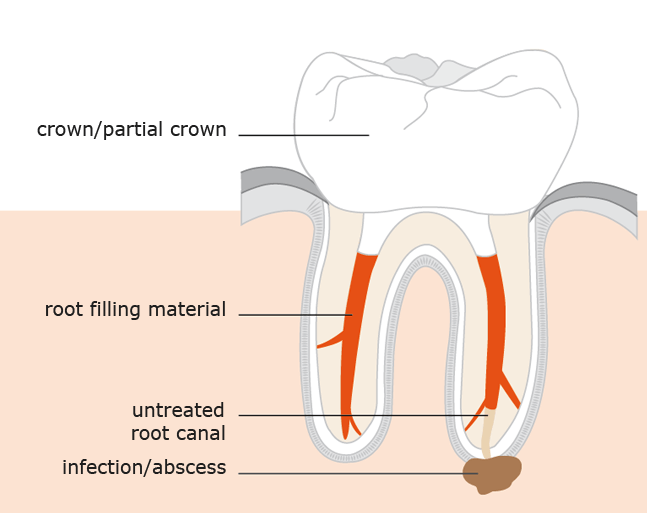
What Are The Potential Risks Or Complications Of Root Canal Retreatment?
While root canal retreatment is generally a safe and effective procedure, as with any dental treatment, there are potential risks and complications to be aware of. Your dentist will carefully evaluate your individual case and discuss these factors with you before proceeding. Here are some of the potential risks associated with root canal retreatment:
- Persistent Infection: In some cases, despite thorough cleaning and disinfection, bacteria may persist within the tooth or surrounding tissues. This could lead to a new or recurrent infection. Your dentist will closely monitor your healing process and address any signs of infection promptly.
- Instrument Fracture: During the retreatment procedure, dental instruments are used to clean and shape the root canals. In rare instances, these instruments may fracture within the tooth, which can complicate the procedure. Your dentist will have the expertise to manage such situations.
- Perforation: The instruments used during retreatment could potentially create small perforations in the tooth’s root or wall. These perforations can affect the tooth’s structure and may require additional measures to repair.
- Discomfort and Swelling: As with any dental procedure, you might experience temporary discomfort and swelling after root canal retreatment. However, these symptoms should gradually subside as you heal.
- Root Canal Anatomy: Teeth can have complex root canal systems with varying shapes and configurations. In some cases, certain areas of the root canal might be difficult to access or treat effectively, leading to potential challenges in complete cleaning and sealing.
- Tooth Fragility: After retreatment, the tooth might become more fragile, especially if a significant amount of tooth structure has been removed during the process. Your dentist might recommend additional measures, such as a dental crown, to protect and strengthen the tooth.
- Unpredictable Outcome: Despite the best efforts of dental professionals, there are cases where retreatment might not yield the desired results. The tooth’s condition and response to treatment can be influenced by various factors that are not always within the dentist’s control.
It’s important to have open communication with your dentist before and after the root canal retreatment procedure. Make sure to discuss any concerns, questions, or potential complications you might be worried about. Your dentist will provide you with personalized guidance, recommendations, and post-treatment care instructions to minimize the risks and ensure the best possible outcome for your dental health. If you have further questions about Root Canal Retreatment, please contact us.
What Are The Alternative Treatments If I Do Not Choose Root Canal Retreatment?
If you decide that root canal retreatment is not the right option for you, there are several alternative treatments to consider, each with its own benefits and considerations:
- Tooth Removal (Extraction): If you choose not to undergo root canal retreatment or if the retreatment is unsuccessful, the tooth might need to be extracted (removed). Tooth extraction is usually considered when the tooth’s damage or infection is beyond repair. After extraction, you and your dentist can discuss options for replacing the missing tooth.
- Dental Implant: Dental implants are a popular option for replacing missing teeth. An implant is a titanium post that is surgically placed in the jawbone, acting as an artificial tooth root. After a healing period, a prosthetic tooth called a dental implant crown is attached to the implant, providing a natural-looking and functional replacement for the extracted tooth.
- Dental Bridge: A dental bridge involves placing an artificial tooth (pontic) between two adjacent healthy teeth. The healthy teeth serve as anchors for the bridge. While this option doesn’t require surgery like implants, it involves modifying the adjacent teeth to accommodate the bridge.
- Apicoectomy (Endodontic Surgery): An apicoectomy is a surgical procedure that might be considered if root canal retreatment has not resolved the issue. During an apicoectomy, the tip of the tooth’s root is removed along with any infected tissue. The root end is then sealed to prevent further infection.
- Referral to an Endodontist: If your dentist believes that the complexities of your case require specialized expertise, they might refer you to an endodontist. Endodontists are dental specialists who focus on diagnosing and treating dental issues related to the pulp and root of teeth. They can provide advanced treatment options and insights into the best course of action.
It’s important to discuss the pros and cons of each alternative treatment with your dentist. Factors such as your overall oral health, the location of the affected tooth, your budget, and your personal preferences will play a role in determining the most suitable option for you. Your dentist will work closely with you to ensure that your chosen treatment aligns with your goals for both oral health and overall well-being. If you have further questions about Root Canal Retreatment, please contact us.
Cost of Root Canal Treatment
Root Canal Treatment is a procedure to save teeth by removing the nerve space inside a tooth and replacing it with a filling material (gutta percha). Root canals are charged based on the number of canals (ranging from 1 to 4 or more), as well as other complicating factors (such as difficult access, exceptional anatomy, calcified canals or retreatment). Therefore, the cost of root canal treatment can range from $713 to 1593. The codes relevant to root canal treatment in the Ontario Dental Association’s Suggested Fee Guide appear as follows:
Root Canals, Permanent Teeth/Retained Primary Teeth, One Canal
- 33111 – One canal: $713
- 33112 – Difficult Access: $796
- 33113 – Exceptional Anatomy: $796
- 33114 – Calcified Canals: $796
- 33115 – Retreatment of Previously Completed Therapy: $847
Root Canals, Permanent Teeth/Retained Primary Teeth, Two Canals
- 33121 – Two canals: $883
- 33122 – Difficult Access: $916
- 33123 – Exceptional Anatomy: $916
- 33124 – Calcified Canals: $916
- 33125 – Retreatment of Previously Completed Therapy: $1021
Root Canals, Permanent Teeth/Retained Primary Teeth, Three Canals
- 33131 – Three canals: $1179
- 33132 – Difficult Access: $1352
- 33133 – Exceptional Anatomy: $1352
- 33134 – Calcified Canals: $1352
- 33135 – Retreatment of Previously Completed Therapy: $1361
Root Canals, Permanent Teeth/Retained Primary Teeth, Four or More Canals
- 33141 – Four or more canals: $1377
- 33142 – Difficult Access: $1538
- 33143 – Exceptional Anatomy: $1538
- 33144 – Calcified Canals: $1538
- 33145 – Retreatment of Previously Completed Therapy: $1593
Root canal therapy is sometimes considered a supplementary service by dental insurance plans and may or may not be covered by your dental insurance. Be sure to find out from your dental insurance plan provider how much you are eligible for before going ahead with dental treatment. Our fees are consistent with the ODA Fee Guide.
For patients without dental insurance, Atlas Dental is pleased to offer dental financing through Dentalcard. Affordable payment plans start at 7.95% for terms of 6 months to 6 years. To learn more about Dentalcard dental treatment financing, follow this link.
What Are The Steps In The Root Canal Retreatment Procedure?
Root canal retreatment is a multi-step procedure designed to address issues within a previously treated tooth. While the specifics of each case can vary, the following are the general steps involved in a root canal retreatment procedure:
- Initial Assessment and Examination: Your dentist will begin by reviewing your dental history, including any previous root canal treatment. They will also perform a thorough examination, which may include X-rays, to assess the condition of the tooth, root canals, and surrounding tissues.
- Local Anesthesia: Before the procedure begins, the dentist will administer a local anesthetic to numb the area around the tooth. This ensures that you remain comfortable and pain-free throughout the treatment.
- Access Opening: The dentist will create an opening in the crown of the tooth to access the root canals. If a previous tooth filling or dental crown is in place, it will be removed to allow access to the interior of the tooth.
- Removal of Filling Material: The dentist will carefully remove any existing filling material, sealers, or obturating materials from the root canals. This step is crucial to ensure a thorough cleaning of the canals.
- Cleaning and Disinfection: The root canals will be meticulously cleaned and disinfected to remove any remaining bacteria, infected tissue, or debris. Special instruments and solutions are used for this purpose.
- Shaping of Canals: The root canals are shaped to facilitate effective cleaning and filling. This step ensures that the canals are ready for proper sealing.
- Obturation (Filling) of Canals: After cleaning and shaping, the root canals are filled with a biocompatible material, usually a rubber-like compound called gutta-percha. The canals are sealed to prevent further infection.
- Temporary or Permanent Restoration: Depending on the condition of the tooth, a temporary or permanent restoration might be placed on top. In some cases, a new crown might be needed to restore the tooth’s strength and function.
- Follow-Up: After the retreatment procedure, you will be provided with aftercare instructions. You might need to schedule follow-up appointments to monitor your healing and ensure the success of the treatment.
- Monitoring and Healing: It’s important to follow your dentist’s instructions for post-treatment care, including any prescribed medications. You might experience some mild discomfort or sensitivity for a few days, but this should subside as you heal.
- Final Restoration: If a temporary restoration was placed initially, your dentist might recommend a follow-up appointment to place a permanent crown or restoration on the treated tooth.
Remember that every patient’s situation is unique, and the steps involved in your root canal retreatment might vary based on the specific circumstances of your case. Your dentist will guide you through the process, addressing any questions or concerns you have along the way to ensure the best possible outcome for your dental health. If you have further questions about Root Canal Retreatment, please contact us.
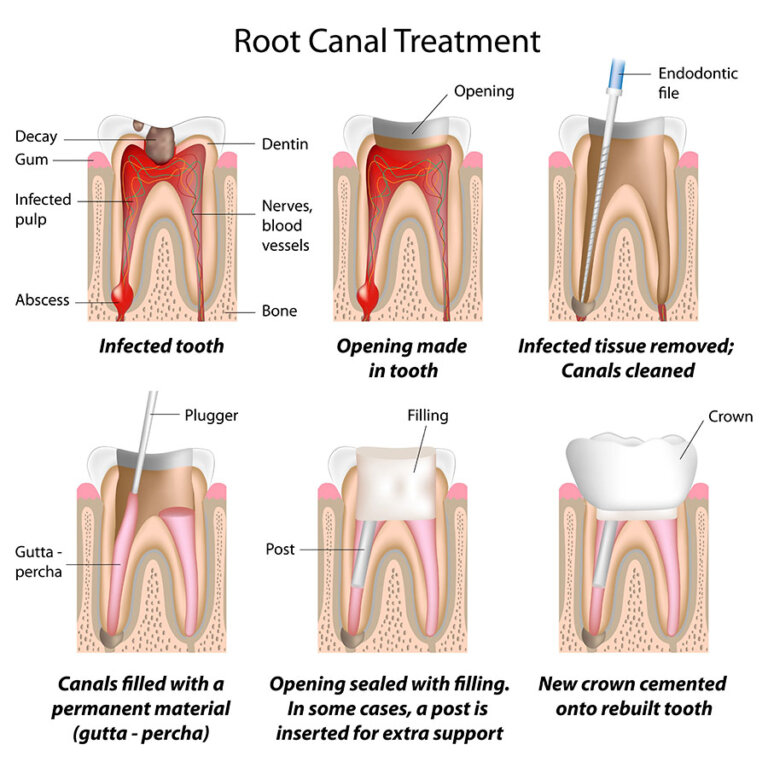
Can I Have Root Canal Retreatment If I Am Pregnant?
Pregnancy is a time when taking care of your health becomes especially important. Dental health is no exception, as it can have an impact on both your well-being and the well-being of your developing baby. If you’re considering root canal retreatment while pregnant, there are several factors to consider.
- Safety Concerns: Root canal retreatment is generally considered safe during pregnancy, especially if you are experiencing discomfort or tooth pain related to a previously treated tooth. However, certain precautions are taken to ensure the safety of both you and your baby.
- Timing: Dental treatments, including root canal retreatment, are often best performed during the second trimester of pregnancy. This is a period when the risk of complications is lower, and most major fetal development has taken place. However, if you are experiencing severe pain or infection, treatment might be necessary during any trimester.
- Communication with Healthcare Providers: It’s crucial to inform both your dentist and obstetrician about your pregnancy. Your dentist can collaborate with your obstetrician to ensure that any medications or procedures used during root canal retreatment are safe for you and your baby.
- Local Anesthesia: Local anesthesia is generally safe during pregnancy. However, your dentist will consider the type and amount of anesthesia used to minimize any potential risks. The goal is to manage pain while ensuring the least impact on your baby.
- Radiation Exposure: Dental X-rays are sometimes necessary for accurate diagnosis and treatment planning. If X-rays are needed, your dentist will take precautions to minimize radiation exposure to your abdomen and baby. They will use a lead apron with a thyroid collar to shield your body.
- Medications: If antibiotics or other medications are prescribed after the root canal retreatment, your dentist will consider their safety during pregnancy. Some medications are safe to use during pregnancy, while others might be avoided or used with caution.
- Aftercare: After the procedure, follow your dentist’s aftercare instructions carefully. Maintaining good oral hygiene and attending any recommended follow-up appointments are important for your dental health.
- Emergency Situations: In cases of severe pain, infection, or dental emergencies, timely treatment is essential. If you’re pregnant and experiencing dental issues, consult your dentist and obstetrician to determine the best course of action.
Ultimately, the decision to undergo root canal retreatment during pregnancy should be made with the guidance of your dental and medical professionals. They will work together to ensure that your dental health is managed in a way that considers both your well-being and the health of your developing baby. If you have further questions about Root Canal Retreatment, please contact us.
How Long Does Root Canal Retreatment Last?
In general, a properly performed root canal retreatment can last many years, and with proper care, it can last a lifetime. The longevity of a root canal retreatment can vary based on several factors, including the specific circumstances of the case, the quality of the treatment, and how well you maintain your oral hygiene and overall dental health. Here are some factors that can influence the duration of the results:
- Quality of Treatment: A well-executed root canal retreatment, including thorough cleaning and sealing of the root canals, significantly contributes to the long-term success of the procedure. The expertise of your dentist or endodontist plays a crucial role in achieving optimal results.
- Follow-Up Care: Following your dentist’s post-treatment care instructions is essential. This includes maintaining good oral hygiene practices, attending regular dental check-ups, and addressing any issues promptly.
- Restoration: The type of restoration placed on the treated tooth, such as a dental crown, can impact its longevity. A crown provides added protection and strength to the tooth, helping to prevent fractures and damage.
- Oral Hygiene: Practicing good oral hygiene at home is vital for the long-term success of any dental procedure. Brushing, flossing, and using antimicrobial mouth rinses as recommended can help prevent new infections and complications.
- Regular Check-Ups: Regular dental check-ups allow your dentist to monitor the health of your treated tooth and address any issues before they become more significant problems.
- Reinfection or New Damage: While root canal retreatment aims to resolve the existing issue, there’s always a small possibility of reinfection or new damage occurring over time. Being vigilant about any changes or symptoms is important for early detection and prompt treatment.
It’s important to remember that every patient’s situation is unique, and the durability of a root canal retreatment can vary. Your dentist or endodontist will discuss your specific case with you and provide guidance on how to maximize the longevity of the treatment. By taking proper care of your dental health and following professional advice, you can significantly increase the chances of enjoying the benefits of your root canal retreatment for many years to come. If you have further questions about Root Canal Retreatment, please contact us.
We also think you’ll like…
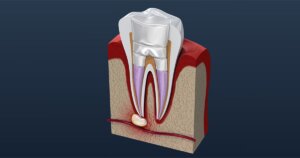
Root Canal Treatment
Root Canal Treatment What Is Root Canal Treatment? If you’ve been told that you need a Root Canal Treatment, you might be feeling a bit
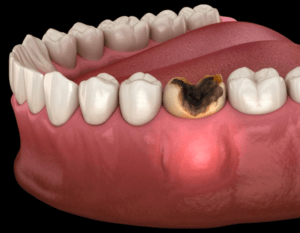
Pulp Necrosis
Pulp Necrosis What Is Pulp Necrosis? Pulp Necrosis is a dental condition that occurs when the innermost tissue of a tooth, known as the pulp,

Broken Tooth
Broken Tooth What Is A Broken Tooth? A Broken Tooth occurs when a tooth is chipped, cracked, or fractured. This can result from various causes,
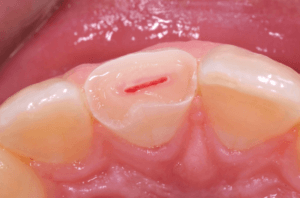
Pulpectomy
Pulpectomy What Is Pulpectomy? The pulp tissue, located at the center of the tooth, houses nerves and blood vessels, contributing to the tooth’s overall vitality.
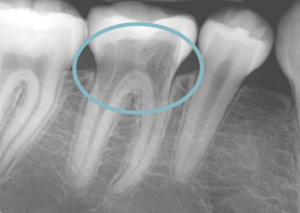
External Root Resorption
External Root Resorption What Is External Root Resorption? External root resorption is a dental condition where the body’s immune system mistakenly targets the external surface
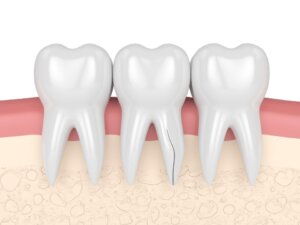
Vertical Root Fracture
Vertical Root Fracture What Is A Vertical Root Fracture? A Vertical Root Fracture is a kind of dental problem that’s quite challenging for dentists to

